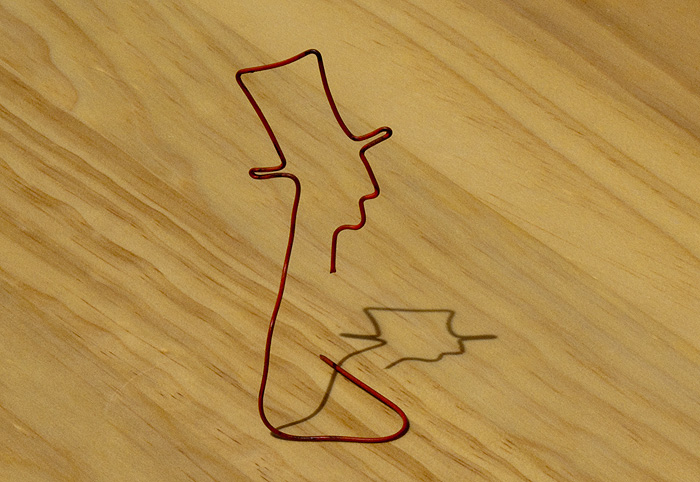Sunday, August 16, 2009 - Red Rock, East Chatham NY
< previous day | archives | next day >

Wire art series #8 - Top Hat, ca. early 1990's, photographed April 25, 2009
About fifteen years ago I started playing around bending wire into bird, animal, and human figures and some inanimate figures as well. Back in April I was showing some of them to Kate and with her encouragement we spent a sunny morning photographing them. I'm presenting a few of those images in a series here.
An image of this guy appeared on a special edition cover of Wired Magazine a few years ago. Wired published a special run of 100 with individual subscribers pictures on the cover of their magazine that month. I submitted a photo of this guy as my photo and it was accepted. Fun.
Night camp
On my property off Less Traveled Road - The Home Place, Red Rock, East Chatham NY
- I used to camp in a few locations on what little I had left of the family farm
- In the driveway by the house
- Across the road where the barn once stood
- On the 20 acre piece off Less Traveled Road
- Now, with the kind support of the friends who now own the place, I camp across the road where the barn once stood.
- Verizon cell phone service - Terrible, barely usable with an amplifier
- Verizon EVDO service - Terrible, barely usable with an amplifier
- Find other references to Home Place
- List the nights I've camped here
- Check the weather here
As My Breathing Evened Out
As my breathing evened out, I began to notice other sensations. The water felt different from any other water I'd ever swum in, as if it were more solid than fluid, as though I were swimming through a liquid Sno-Kone. [swimming in 33 degree water / 34 degree air]
Swimming To Antarctica, Lynne Cox, The New Yorker, February 3, 2003